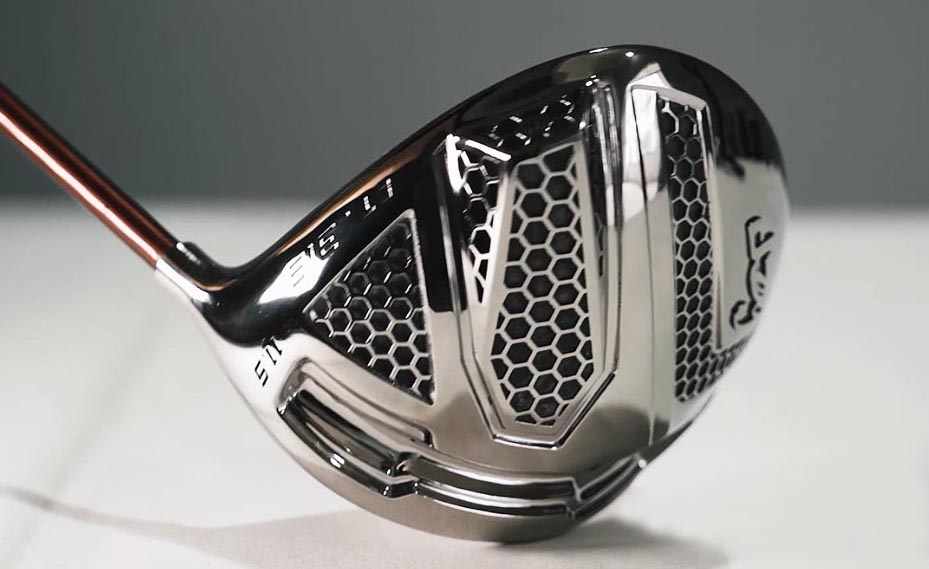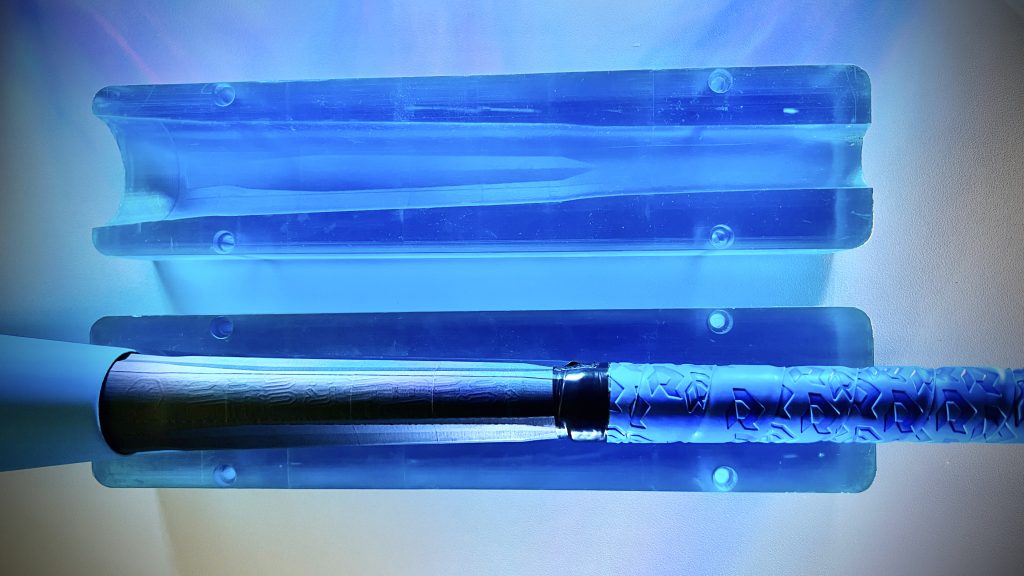Japanese lifestyle golf brand Designer has launched its new titanium 3D printed golf club heads.
Manufactured using metal 3D printers from Farsoon Technologies, the golf club heads are advertised as being ultra-strong and lightweight. Designer’s newest product also features a novel head-design, with self-supported internal structures.
According to Farsoon, the company’s 3D printing technology enabled the golf brand to innovate, design, and produce “top-of-the-line club heads” for players seeking to achieve greater distance, accuracy, and stability.
The Designer club heads add to Farsoon’s growing list of collaborations to 3D print sport equipment. The company’s 3D printers have previously been used to manufacture bobsled helmets, speed skating blades, and sports shoes.
The 3D printed golf club heads are currently being showcased at the PGA Show in Orlando, which will run until January 26.

New 3D printed golf club heads
Designer’s new golf club heads are manufactured in series production runs using Farsoon Technologies’ FS200M laser powder bed fusion (LPBF) 3D printer.
According to Farsoon, Designer’s FS200M 3D printer has enabled the company to reduce cost per part by 70% from design to manufacturing, compared to conventional manufacturing processes. Additionally, Farsoon’s metal 3D printer allows multi-layer thickness parameters to be customized, boosting productivity.
The golf club heads are 3D printed from a customized, “ultra-strong” titanium alloy. Farsoon claims that this material features a combination of lightweight and strength that is superior to conventional stainless steel products. Moreover, Designer’s new offering is said to offer a high-speed impact surface with enhanced ductility and strength for optimal strikes of the golf ball.
In addition to faster design and verification iterations, Farsoon 3D printing is said to enable more innovative designs not possible with conventional manufacturing methods. This includes the golf club head’s self-supported internal structures, which contribute to thinner, stronger, and textured external surfaces.
The toe, face, sole, crown, heel and hosel geometries of the golf club heads are 3D printed as one piece. This reportedly enables improved precision and performance over conventional methods, and offers greater resistance to twisting, increased stability, and superior driving distance.
Farsoon Technologies also points to the 3D printed club head’s integrated aerodynamic features, which reduce drag over the integrated geometries. This is said to increase head stability and speed.

Farsoon Technologies’ growing sport portfolio
Designer’s new golf products are not the first to be produced using Farsoon 3D printers. Futai Technology previously leveraged seven Farsoon metal 3D printers, including the FS200M and FS273M, to scale-up the series production of its titanium golf club heads.
According to Futai, the company delivers more than 15,000 titanium 3D printed golf club heads to customers each year, with 3D printer uptime exceeding 90%. Moreover, Farsoon 3D promoters have reportedly reduced product development time from 45 days to just one week, saving 70% in expenses in the process.
Away from golf, in 2021 Farsoon signed a collaborative agreement with the Chinese Olympic Committee to develop a new generation of 3D printed speed skating blades. Manufactured on the company’s FS421M 3D printer, these blades are made from AlMgSc alloy and are lightweight, strong, and customized for high-performance skating.
Farsoon 3D printers have also been used to develop 3D printed TPU helmets for China’s 2022 Winter Olympic bobsled team, as well as 3D printed sports shoes for Chinese sportswear manufacturer Peak Sport Products.

3D printing: the future of sports equipment production?
In an interview with 3D Printing Industry, Glen Mason, Director of Advanced Manufacturing at sports equipment manufacturer Wilson, outlined the challenges in moving from prototyping to producing sports goods with additive manufacturing.
“There’s challenges around printing parts from a material standpoint, from a surface finish standpoint, and even something as trivial as color is complicated,” explained Mason. “Until we can get multiple materials interacting at the same time, I don’t foresee 3D printing solving any consumer projects.”
However, while not mass 3D printing end parts, Wilson has incorporated additive manufacturing into its production workflow. Last year, the US-based company announced a partnership with Nexa3D to leverage its high-speed NXE400 resin 3D printers.
Wilson used Addifab’s freeform injection molding (FIM) technology and xMOLD soluble resin, to prototype 3D printed injection mold tooling for Wilson’s youth baseball bat grips. This process offered improved design possibilities, time-savings, and R&D freedom.

Elsewhere, it was announced last year that multinational printing firm HP had partnered with Brooks Running to 3D print midsoles for the company’s limited-edition Exhilarate-BL running shoes. Produced using HP’s Multi Jet Fusion (MJF) 3D printing technology, the 3D printed running shoe midsoles are said to provide a propulsive and springy feel, outperforming 90% of midsoles on the market.
Brooks’ 3D printed offering was made available in a limited release to select wear testers and Run Club members with synced wearables through Brooks’ platform in alliance with DashLX. This release was used to aid the company’s shoe designs by collecting running data such as stride lengths and cadences.
Similarly, sports equipment manufacturing firm Adidas introduced a limited-edition 3D printed golf shoe, the MC87 4D. Produced using Carbon’s Digital Light Synthesis (DLS) 3D printing process. This golf shoe incorporates a unique “4D midsole” lattice structure, designed to provide controlled energy return.
Subscribe to the 3D Printing Industry newsletter to keep up to date with the latest 3D printing news. You can also follow us on Twitter, like our Facebook page, and subscribe to the 3D Printing Industry Youtube channel to access more exclusive content.
Are you interested in working in the additive manufacturing industry? Visit 3D Printing Jobs to view a selection of available roles and kickstart your career.
Featured image shows Designer’s 3D printed golf club heads. Image via Farsoon Technologies.


